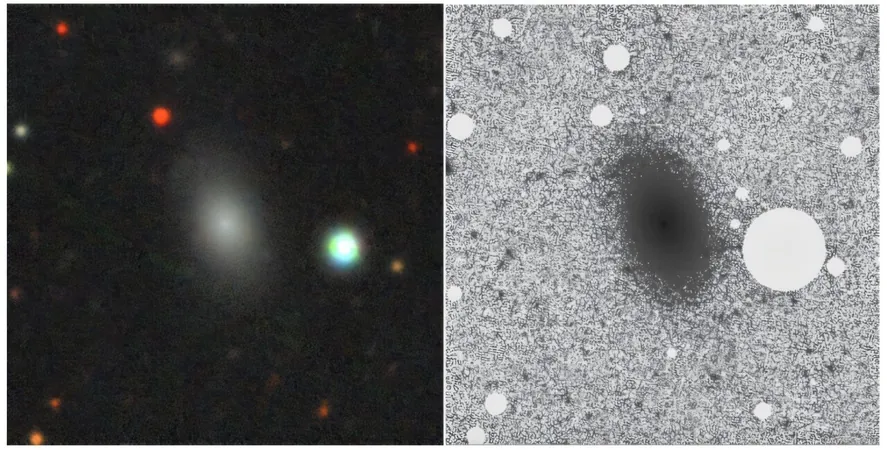
Unveiling Yellowstone's Microbial Marvel: The Oxygen-Sulfur Super Bacterium!
2025-09-02
Author: Olivia
Breaking Boundaries in Microbial Survival!
In a stunning revelation from the geothermal wonderland of Yellowstone, scientists have uncovered a new type of microbe that operates outside the conventional rules of life as we know it! While most organisms depend on oxygen to generate energy, this innovative bacterium takes a mixed approach by utilizing both oxygen and sulfur simultaneously.
Meet the Game-Changing Microbe: Aquificales!
Led by Lisa Keller from Montana State University, researchers studied a bacterium found in a hot spring that belongs to a fascinating group known as Aquificales. The team’s findings were detailed in the prestigious journal Nature Communications.
A Dual Strategy for Survival!
Typically, cells either breathe oxygen or rely on alternative chemicals like sulfur when oxygen is scarce. However, this newfound bacterium flips the script by performing both processes at the same time. Keller emphasizes, "These cells are essentially breathing both oxygen and elemental sulfur together," challenging long-held assumptions about microbial respiration.
Life in the Extreme: Hot Springs
Hot springs present a harsh environment for any organism. With high temperatures and fluctuating gas levels, oxygen often escapes quickly, creating a chaotic habitat. Here, adaptability is key — enter our star microbe, which feeds on simple molecules like hydrogen gas, readily switching between oxygen and sulfur based on availability.
Cutting-Edge Research Techniques!
Keller and her team meticulously isolated this hot-spring bacterium and observed its behavior in controlled lab conditions. They provided the microbe with hydrogen, sulfur, and oxygen, then tracked its chemical reactions and gene activity. Their conclusions were groundbreaking — the microbe not only thrived but grew faster when both respiration pathways were engaged.
Nature's Hidden Gems: Widespread Patterns
The genes and enzymes identified in this study hint that similar dual-energy strategies may be more common across various microbes than previously acknowledged. Especially in environments with fluctuating conditions, such as hot springs or deep-sea vents, these adaptable organisms may gain a competitive edge over their more rigid counterparts.
Lessons from the Dawn of Life!
This research doesn’t just throw light on a single organism; it also opens a window into evolutionary history. During the Great Oxidation Event, which began around 2.8 billion years ago, life needed to adapt quickly as oxygen levels rose erratically. Microbes with the capacity to sense minute amounts of oxygen while relying on sulfur might have had a vital survival advantage.
Real-World Implications: Revolutionizing Bioreactors!
The implications of this discovery extend far beyond microbial ecology. The insights gained could transform how we design bioreactors and manage environmental clean-up efforts. By harnessing microbes that can switch between energy pathways, we could enhance the efficiency of energy systems and maintain consistent pollutant breakdown even when oxygen levels fluctuate.
Conclusion: A New Chapter in Microbial Research!
In summary, the Aquificales bacterium exemplifies the incredible adaptability of life in extreme environments. This discovery not only expands our understanding of microbial energy strategies but also challenges researchers to rethink experimental designs that may overlook crucial biological behaviors. The life within Yellowstone has once again revealed that nature is far more complex and ingenious than we can imagine! This remarkable work invites further exploration into the secrets of life's early adaptations and how they might apply to the challenges we face today.









 Brasil (PT)
Brasil (PT)
 Canada (EN)
Canada (EN)
 Chile (ES)
Chile (ES)
 Česko (CS)
Česko (CS)
 대한민국 (KO)
대한민국 (KO)
 España (ES)
España (ES)
 France (FR)
France (FR)
 Hong Kong (EN)
Hong Kong (EN)
 Italia (IT)
Italia (IT)
 日本 (JA)
日本 (JA)
 Magyarország (HU)
Magyarország (HU)
 Norge (NO)
Norge (NO)
 Polska (PL)
Polska (PL)
 Schweiz (DE)
Schweiz (DE)
 Singapore (EN)
Singapore (EN)
 Sverige (SV)
Sverige (SV)
 Suomi (FI)
Suomi (FI)
 Türkiye (TR)
Türkiye (TR)
 الإمارات العربية المتحدة (AR)
الإمارات العربية المتحدة (AR)